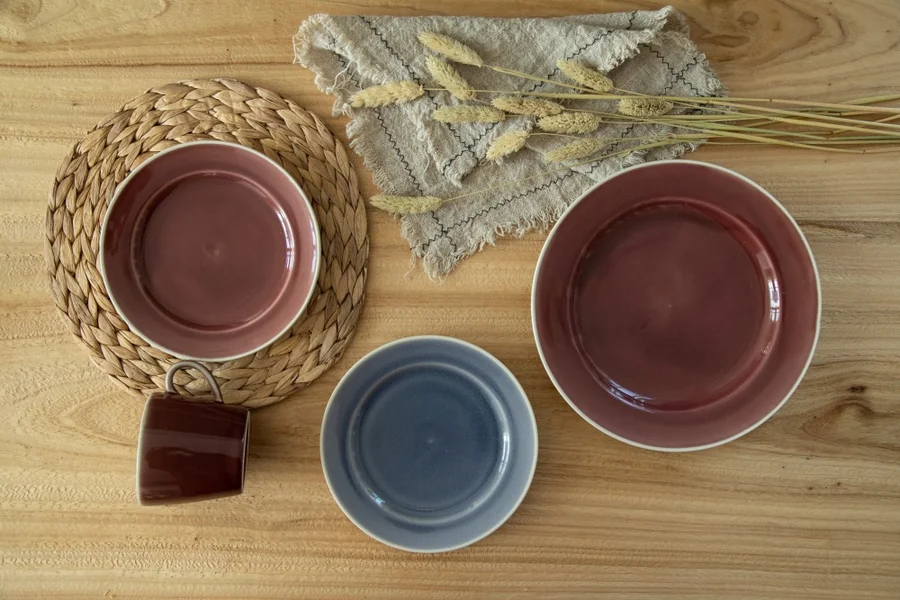From the delicate teacup you hold in your hands to the window pane that lets in the morning light, our world is built with materials we often take for granted. Two of the most ubiquitous and historically significant materials are glass and porcelain. While they appear different, they share a common ancestor: a versatile and abundant class of materials known as silicate ceramics. These materials form the backbone of the traditional ceramics industry, serving as the fundamental building blocks for countless products that are integral to our daily lives.
The enduring legacy of glass and porcelain is no accident. It is a direct result of the unique chemical and physical properties of the raw materials used to create them. Understanding why silicate ceramics are so perfectly suited for this role reveals a fascinating story of geology, chemistry, and human ingenuity. Why has this specific class of materials remained so dominant for thousands of years in manufacturing?
This article will explore the fundamental properties of silicate ceramics and explain why they are the ideal choice for glass and porcelain production. We will delve into their atomic structure, their transformation under heat, and the practical advantages that make them both cost-effective and highly functional.
What Are Silicate Ceramics?
At its core, a ceramic is an inorganic, non-metallic solid prepared by the action of heat and subsequent cooling. Silicate ceramics are a major subgroup of these materials where the primary chemical constituent is silica (silicon dioxide, SiO₂). Silica is one of the most abundant compounds in the Earth’s crust, commonly found as quartz sand and in various clays and feldspars.
The fundamental building block of all silicate ceramics is the silica tetrahedron: a single silicon atom ionically bonded to four oxygen atoms (SiO₄). These tetrahedra can link together in various ways—forming chains, sheets, or complex three-dimensional networks—to create a wide range of minerals with different properties.
The main raw materials used in traditional silicate ceramics include:
- Clay (e.g., Kaolinite): A hydrous aluminosilicate, clay provides plasticity when mixed with water, allowing it to be shaped.
- Feldspar: An aluminosilicate containing potassium, sodium, or calcium, feldspar acts as a flux, lowering the melting temperature of the mixture during firing.
- Silica (Quartz/Flint): Used as a filler, silica provides structural strength and controls shrinkage during firing and drying.
The magic happens when these raw materials are mixed in specific proportions and subjected to high temperatures.
The Role of Silicate Ceramics in Glass Production
Glass is a unique state of matter. It is an amorphous solid, meaning its atoms lack the long-range, ordered structure of a crystalline material. Think of it as a “frozen liquid.” This non-crystalline structure is what gives glass its characteristic transparency. Silicate ceramics are the key to achieving this state.
1. Network Formation
The primary component of most common glass (soda-lime glass) is silica sand. When heated to high temperatures, the silica tetrahedra break their crystalline bonds and become a disordered liquid. The key is how this liquid cools. The strong, directional bonds between the silica tetrahedra make it difficult for them to rearrange back into an ordered crystal lattice before the material solidifies. As a result, they get locked into a random, amorphous network. This ability to form a stable, non-crystalline network is the most critical property that makes silicate ceramics ideal for glassmaking.
2. Viscosity Control
Pure silica has a very high melting point (around 1,700°C), making it energy-intensive and difficult to work with. To make the process more economical, other compounds called fluxes are added. In soda-lime glass, soda ash (sodium carbonate) and lime (calcium oxide) are used. These additives are known as “network modifiers.” They break some of the Si-O-Si bonds, disrupting the 3D network and lowering the viscosity of the molten silica. This makes the glass easier to melt, shape, and form at lower temperatures. Even with these modifiers, the silicate backbone remains the essential structure of the glass.
3. Durability and Chemical Inertness
Once cooled, the strong network of bonds in silicate glass makes it chemically durable and resistant to most acids, water, and environmental degradation. This is why glass is an excellent material for containers, windows, and laboratory equipment. The inherent stability of the silicate ceramics family translates directly into the final product.
The Art and Science of Porcelain Production
Porcelain is a type of vitrified pottery that is known for its strength, hardness, and translucence. Unlike glass, it is not fully amorphous. Instead, it is a multiphase composite material consisting of crystalline phases embedded within a glassy silicate matrix.
1. The Perfect Recipe
The production of porcelain relies on a carefully balanced mixture of three main silicate ceramics:
- Kaolin (Clay): Provides plasticity, allowing the green body (unfired piece) to be molded. Upon firing, it transforms into mullite, a needle-like crystalline phase that provides excellent mechanical strength.
- Feldspar: Acts as a flux. At high temperatures, it melts to form a viscous glass that fills the pores between other particles.
- Quartz (Silica): Serves as a filler, adding rigidity to the body during firing. Some of the quartz dissolves into the feldspar glass, while the rest remains as a crystalline phase that helps control thermal expansion.
2. Vitrification: The Key to Strength
During firing (typically between 1,200°C and 1,400°C), the feldspar melts and begins to dissolve the surfaces of the kaolin and quartz particles. This liquid phase flows into the pores, pulling the remaining solid particles together through surface tension. Upon cooling, this liquid solidifies into a glass, cementing the crystalline mullite and quartz particles into a dense, non-porous body. This process is called vitrification.
The result is a composite material that leverages the best properties of both crystalline and amorphous silicate ceramics. The glassy matrix makes the porcelain impervious to water, while the interlocking mullite crystals give it high mechanical strength and fracture resistance.
3. Translucence and Aesthetics
The unique composition of porcelain also gives it its signature translucence. The glassy phase has a refractive index similar to the mullite and quartz crystals, allowing some light to pass through the material rather than being completely scattered. The purity of the white-firing kaolin clay ensures a bright, white body, making it an ideal canvas for glazes and decoration.
Why Are Silicate Ceramics the Go-To Choice?
Beyond their technical suitability, several practical factors cement the role of silicate ceramics in mass production.
- Abundance and Low Cost: The raw materials—clay, feldspar, and silica—are among the most abundant minerals on Earth. This makes them incredibly inexpensive compared to the highly refined powders required for advanced technical ceramics.
- Ease of Forming: The plasticity of clay-water mixtures allows for a wide variety of traditional and industrial shaping methods, from a potter’s wheel to high-volume slip casting and pressing.
- Versatility: By simply adjusting the ratio of clay, feldspar, and silica, and by controlling the firing conditions, an enormous range of products can be created, from porous earthenware to fully vitrified porcelain.
Frequently Asked Questions (FAQs)
Q: Are all ceramics made from silicate materials?
A: No. While traditional ceramics are almost entirely silicate-based, there is a large and growing field of “advanced” or “technical” ceramics. These are non-silicate materials, often pure oxides (like alumina, zirconia), carbides (silicon carbide), or nitrides (silicon nitride), designed for high-performance applications like armor, engine parts, or electronics.
Q: What is the difference between porcelain and stoneware?
A: Both are types of vitrified silicate ceramics, but they differ in composition and firing temperature. Porcelain is made from purer materials (especially white kaolin) and fired at a higher temperature, making it stronger, whiter, and more translucent. Stoneware is made from less pure clays and fired at a slightly lower temperature, resulting in an opaque, often colored body.
Q: Can glass be considered a ceramic?
A: Yes, glass is a subset of ceramics. It fits the definition of an inorganic, non-metallic material processed with heat. It is specifically an amorphous ceramic, distinguishing it from the crystalline or semi-crystalline structure of materials like porcelain or brick.
Q: What makes kaolin clay so special for porcelain?
A: Kaolin is a very pure form of clay with a low iron content. The lack of iron impurities is why it fires to a brilliant white color, which is essential for high-quality porcelain. It also has a fine particle size that contributes to its plasticity and smooth texture.
Q: Is bone china a type of silicate ceramic?
A: Yes, but with a unique addition. Bone china is a type of soft-paste porcelain that includes bone ash (made from animal bones) as a key ingredient. The bone ash acts as a flux and contributes to the material’s high levels of whiteness and translucency, allowing pieces to be made thinner and more delicate than standard porcelain.
Final Words
The story of silicate ceramics is the story of civilization itself. From the earliest clay pots to the finest porcelain vases and the vast glass panels of modern skyscrapers, these materials have been our constant companions. Their dominance in glass and porcelain production is a testament to a perfect marriage of properties: the network-forming ability of silica, the plasticity of clay, and the fluxing action of feldspar.
This remarkable trifecta, combined with the sheer abundance and low cost of the raw materials, has created an industrial foundation that remains unshaken even in our age of advanced polymers and composites. The next time you look through a window or sip from a ceramic mug, take a moment to appreciate the silent, enduring legacy of silicate ceramics—the humble yet powerful materials that shape our world.





